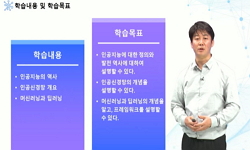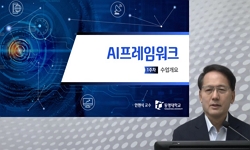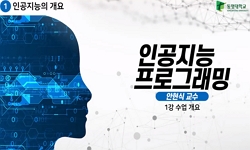The deep learning framework is software designed to help develop deep learning models. Some of its important functions include “automatic differentiation” and “utilization of GPU”. The list of popular deep learning framework includes Caffe (BV...
http://chineseinput.net/에서 pinyin(병음)방식으로 중국어를 변환할 수 있습니다.
변환된 중국어를 복사하여 사용하시면 됩니다.
- 中文 을 입력하시려면 zhongwen을 입력하시고 space를누르시면됩니다.
- 北京 을 입력하시려면 beijing을 입력하시고 space를 누르시면 됩니다.
https://www.riss.kr/link?id=A103225051
- 저자
- 발행기관
- 학술지명
- 권호사항
-
발행연도
2017
-
작성언어
Korean
-
주제어
딥러닝 프레임워크 ; 자동미분 ; 티아노 ; 텐서플로 ; Cognitive toolkit ; CNN ; deep learning framework ; Theano ; TensorFlow ; CNTK ; computational graph ; CIFAR-10
-
KDC
003
-
등재정보
KCI등재
-
자료형태
학술저널
- 발행기관 URL
-
수록면
1-17(17쪽)
-
KCI 피인용횟수
5
- 제공처
-
0
상세조회 -
0
다운로드
부가정보
다국어 초록 (Multilingual Abstract)
The deep learning framework is software designed to help develop deep learning models. Some of its important functions include “automatic differentiation” and “utilization of GPU”. The list of popular deep learning framework includes Caffe (BVLC) and Theano (University of Montreal). And recently, Microsofts deep learning framework, Microsoft Cognitive Toolkit, was released as open-source license, following Google’s Tensorflow a year earlier. The early deep learning frameworks have been developed mainly for research at universities. Beginning with the inception of Tensorflow, however, it seems that companies such as Microsoft and Facebook have started to join the competition of framework development. Given the trend, Google and other companies are expected to continue investing in the deep learning framework to bring forward the initiative in the artificial intelligence business. From this point of view, we think it is a good time to compare some of deep learning frameworks. So we compare three deep learning frameworks which can be used as a Python library. Those are Googles Tensorflow, Microsoft’s CNTK, and Theano which is sort of a predecessor of the preceding two.
The most common and important function of deep learning frameworks is the ability to perform automatic differentiation. Basically all the mathematical expressions of deep learning models can be represented as computational graphs, which consist of nodes and edges. Partial derivatives on each edge of a computational graph can then be obtained. With the partial derivatives, we can let software compute differentiation of any node with respect to any variable by utilizing chain rule of Calculus.
First of all, the convenience of coding is in the order of CNTK, Tensorflow, and Theano. The criterion is simply based on the lengths of the codes and the learning curve and the ease of coding are not the main concern. According to the criteria, Theano was the most difficult to implement with, and CNTK and Tensorflow were somewhat easier. With Tensorflow, we need to define weight variables and biases explicitly. The reason that CNTK and Tensorflow are easier to implement with is that those frameworks provide us with more abstraction than Theano. We, however, need to mention that low-level coding is not always bad. It gives us flexibility of coding. With the low-level coding such as in Theano, we can implement and test any new deep learning models or any new search methods that we can think of.
The assessment of the execution speed of each framework is that there is not meaningful difference. According to the experiment, execution speeds of Theano and Tensorflow are very similar, although the experiment was limited to a CNN model. In the case of CNTK, the experimental environment was not maintained as the same. The code written in CNTK has to be run in PC environment without GPU where codes execute as much as 50 times slower than with GPU. But we concluded that the difference of execution speed was within the range of variation caused by the different hardware setup.
In this study, we compared three types of deep learning framework: Theano, Tensorflow, and CNTK. According to Wikipedia, there are 12 available deep learning frameworks. And 15 different attributes differentiate each framework. Some of the important attributes would include interface language (Python, C ++, Java, etc.) and the availability of libraries on various deep learning models such as CNN, RNN, DBN, and etc. And if a user implements a large scale deep learning model, it will also be important to support multiple GPU or multiple servers. Also, if you are learning the deep learning model, it would also be important if there are enough examples and references.
참고문헌 (Reference)
1 "https://www.tensorflow.org/"
2 "https://www.microway.com/hpc-tech-tips/deep-learning-frameworks-survey-tensorflow-torch-theano-caffe-neon-ibm-machine-learning-stack/"
3 "https://www.cs.toronto.edu/~kriz/cifar.html"
4 "https://www.cntk.ai/pythondocs/index.html"
5 "https://keras.io/"
6 "https://github.com/jcjohnson/cnn-benchmarks"
7 "https://github.com/Microsoft/CNTK"
8 "https://en.wikipedia.org/wiki/Comparison_of_deep_learning_software"
9 "https://deeplearning4j.org/"
10 "https://colah.github.io/posts/2015-08-Backprop/"
1 "https://www.tensorflow.org/"
2 "https://www.microway.com/hpc-tech-tips/deep-learning-frameworks-survey-tensorflow-torch-theano-caffe-neon-ibm-machine-learning-stack/"
3 "https://www.cs.toronto.edu/~kriz/cifar.html"
4 "https://www.cntk.ai/pythondocs/index.html"
5 "https://keras.io/"
6 "https://github.com/jcjohnson/cnn-benchmarks"
7 "https://github.com/Microsoft/CNTK"
8 "https://en.wikipedia.org/wiki/Comparison_of_deep_learning_software"
9 "https://deeplearning4j.org/"
10 "https://colah.github.io/posts/2015-08-Backprop/"
11 "http://www.wildml.com/2015/09/recurrent-neural-networks-tutorial-part-1-introduction-tornns/"
12 "http://rodrigob.github.io/are_we_there_yet/build/classification_datasets_results.html"
13 "http://neuralnetworksanddeeplearning.com/"
14 "http://deeplearning.net/software/theano/index.html"
15 Bergstra, J., "Theano: A CPU and GPU Math Expression Compiler" 2010
16 Goodfellow, I., "Deep Learning" MIT Press 2016
17 Bahrampour, S., "Comparative Study of Deep Learning Software Frameworks"
18 Yu, D., "An Introduction to Computational Networks and the Computational Network Toolkit" Microsoft Research 2014
동일학술지(권/호) 다른 논문
-
유전자 알고리즘을 활용한 소셜네트워크 기반 하이브리드 협업필터링
- 한국지능정보시스템학회
- 노희룡(Heeryong Noh)
- 2017
- KCI등재
-
- 한국지능정보시스템학회
- 박상민(Sang-Min Park)
- 2017
- KCI등재
-
한국어 음소 단위 LSTM 언어모델을 이용한 문장 생성
- 한국지능정보시스템학회
- 안성만(SungMahn Ahn)
- 2017
- KCI등재
-
Hot spot DBC: Location based information diffusion for marketing strategy in mobile social networks
- 한국지능정보시스템학회
- Jegwang Ryu(류제광)
- 2017
- KCI등재
분석정보
인용정보 인용지수 설명보기
학술지 이력
| 연월일 | 이력구분 | 이력상세 | 등재구분 |
|---|---|---|---|
| 2027 | 평가예정 | 재인증평가 신청대상 (재인증) | |
| 2021-01-01 | 평가 | 등재학술지 유지 (재인증) |  |
| 2018-01-01 | 평가 | 등재학술지 유지 (등재유지) |  |
| 2015-03-25 | 학회명변경 | 영문명 : 미등록 -> Korea Intelligent Information Systems Society |  |
| 2015-03-17 | 학술지명변경 | 외국어명 : 미등록 -> Journal of Intelligence and Information Systems |  |
| 2015-01-01 | 평가 | 등재학술지 유지 (등재유지) |  |
| 2011-01-01 | 평가 | 등재학술지 유지 (등재유지) |  |
| 2009-01-01 | 평가 | 등재학술지 유지 (등재유지) |  |
| 2008-02-11 | 학술지명변경 | 한글명 : 한국지능정보시스템학회 논문지 -> 지능정보연구 |  |
| 2007-01-01 | 평가 | 등재학술지 유지 (등재유지) |  |
| 2004-01-01 | 평가 | 등재학술지 선정 (등재후보2차) |  |
| 2003-01-01 | 평가 | 등재후보 1차 PASS (등재후보1차) |  |
| 2001-07-01 | 평가 | 등재후보학술지 선정 (신규평가) |  |
학술지 인용정보
| 기준연도 | WOS-KCI 통합IF(2년) | KCIF(2년) | KCIF(3년) |
|---|---|---|---|
| 2016 | 1.51 | 1.51 | 1.99 |
| KCIF(4년) | KCIF(5년) | 중심성지수(3년) | 즉시성지수 |
| 1.78 | 1.54 | 2.674 | 0.38 |




 ScienceON
ScienceON DBpia
DBpia






